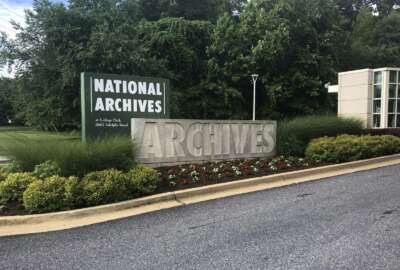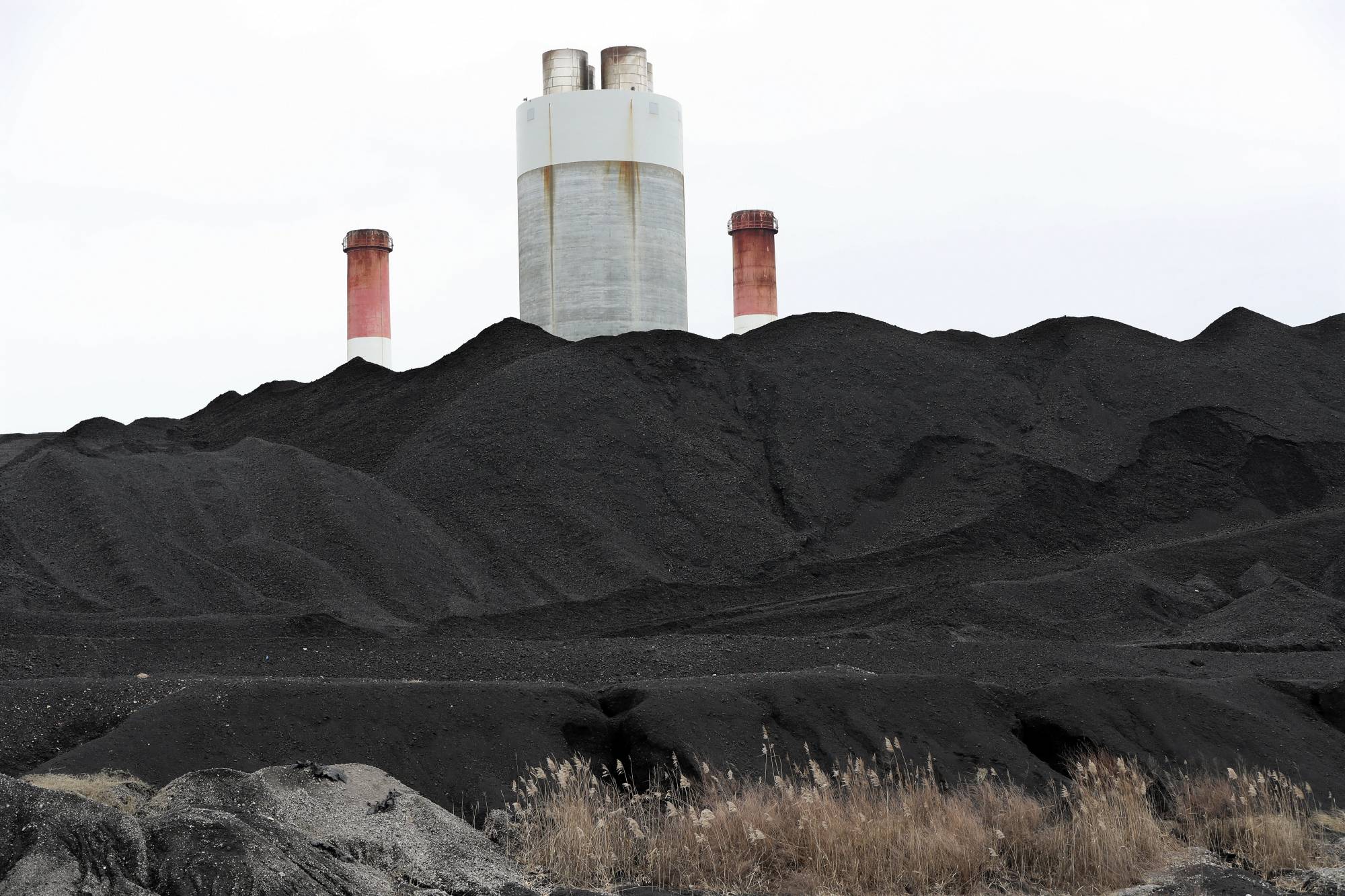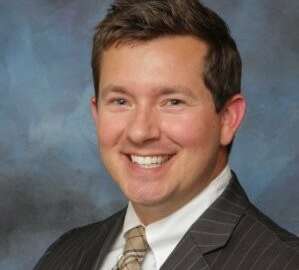How one agency deals with digitizing its rich trove of cultural heritage records
The Tennessee Valley Authority has changed a big part of the American landscape; and has a large cache of what are known as cultural heritage documents.
The Tennessee Valley Authority (TVA) has changed a big part of the American landscape over the years. Established during the Franklin Roosevelt administration, TVA has a large cache of what are known as cultural heritage documents. With the deadline looming to present digitized records to the National Archives and Records Administration, the Federal Drive with Tom Temin checked in with TVA’s senior manager for enterprise records, Rebecca Coffey.
Interview Transcript:
Tom Temin And for this agency, which started you know, in that depression era, as part of that new deal, and so forth, tons of maps, photographs, tell us what you do have that are considered cultural heritage for permanent forever preservation?
Rebecca Coffey Well, TVA definitely has a rich heritage that we like to celebrate and make part of the American story. So when you think about our charge and our mission, we were really about bringing progress to the Tennessee Valley. It’s a seven state region. And we were charged with controlling flooding, which was a problem back then, or erosion. We did a lot of things with economic development, as well as some unexpected things like progress with malaria treatment. So as we came to the valley, one of the biggest programs we had was to build a dam system to control those rivers. Well, to do that, we had to flood a lot of properties that were belonging to long term farmers here in the Valley. And we had to move cemeteries. So our cemetery collection is probably one of the biggest, most requested books of records that we get people in the public wanting to track down. Hey, where did my ancestors get moved to, not just people who lived on the farms, but we also flooded areas in tribal grounds. And so we have a lot of relations with our Indian reservations and our partners there, where we track and make sure that we know not only where the cemeteries, the burial grounds are, but also some of their ceremonial grounds that were very sacred to them. So that is a big part of the records that we continue to create today. As we go through and make transmission lines as we build plants. We’re always looking to see what is underground, and what might be there that needs preservation. Now, you touched a little bit on our records with mapping. It is such a great story, TVA had just phenomenal people on staff to do some of that work. And we were commissioned a lot of times by other agencies to do mapping, even with World War II, we were sent to map areas overseas for the war effort. And so TVA had a huge collection of those records that we’ve turned over already to the National Archives to make them available to the public. And then in house right now, we have a big digitization project underway under the FADGI standards, to be able to make all of our mapping across the seven state region, not just the maps, but also aerial photography available to the public.
Tom Temin Sure. I want to get back to those cemetery records, though, for a minute, that type of thing, because what are the forms of the records? I’m thinking construction crews encountered a cemetery? Did they take photographs of the headstones? Do they enter that information into a log book, their coordinates where this stuff was? What forms do they take?
Rebecca Coffey Absolutely all of the above. And so we have a huge photography collection of the areas that they went into, not just the cemeteries but just life in the valley during that time. But they would go in and try to map talk to the people on the ground about who were in the cemeteries. Back in those days, not every cemetery had headstones. And so it required a lot of research by our TVA teams to figure out whose families are buried here to create the most accurate log. So you’ll have a lot of field books, to smaller books, where they’re out in the field talking to people with their handwritten cursive notes. And then we will have actual reports where we’ve sent back then it was more in letter format, I will say, we’ve sent letters to the President saying, you know, here’s what we’re doing. We’ve also got internal memos that we’ll talk about what we found how many people are there and negotiations for another place to move them to certainly a place that we wouldn’t expect to flood again, so that they are set up and ready to go. We also have some things that we’ve done back around then not teen 80s, where we shared a lot of this information with other agencies as well as schools. And so as we went through a huge digitization project back in the 80s, for some of these records, we digitize things based on of course, the standards in place at the time with a focus on making them sustainable, searchable, and all of that. Technology’s changed. And so we’re looking to sort of bring those up to speed with the FADGI standards of today as well.
Tom Temin We’re speaking with Rebecca Coffey. She is Senior Manager of enterprise records at the Tennessee Valley Authority. So therefore, that’s involving imaging of these logbooks and photographs and so forth. Those were, of course, film photography, so you can image and scan those. That’s the basic process here.
Rebecca Coffey Yes, and we’re working to make sure that we’ve got them in the best quality that we can. And so as you know, already, FADGI has been a great partner, lots of agencies involved, but they have released the technical guidelines for digitizing cultural heritage materials. I think at this point, we’re probably on version three of that. And so we always look to those guidelines to make sure that we’re capturing the best images, obviously, for these records, most are permanent. And so we want to make sure that they’re going to be usable for the future. Not only do we have the NARA guidelines that come out about these federal records, but because of the work that we do at TVA, we also have to meet some record standards under the National Environmental Policy Act, NEPA, the National Historic Preservation Act, NHPA. And the archaeological resources Protection Act, ARPA, specific to the cemetery, ones that we talked about, there’s also a Native American Graves Protection and Repatriation Act. And that is one that really has been a focus the past few years. We are a partner in those tribal relations organizations. And so we have completely open the doors to the records that we have, so that they can get a better perspective on their people, and making sure that they feel confident that we are protecting them. As we’re making raster images of some of these, we’re making sure that we’re not just capturing the information in it. Because there’s intrinsic value, sometimes in the paper records, when you think about that TVA person out there in the field, talking to people and making their notes. And there’s always going to be some of those little stories that are captured in slides, you know about people that in and of itself is part of that cultural record.
Tom Temin Right the picture of the page and not simply the information on the page. And by the way, we’ve been mentioning FADGI over and over. That’s federal agencies digital guidelines initiative for people that may not be familiar. Now, some of these things like maps that we talked about, also. They might be large, and consequently delicate, maybe faded, probably hand drawn, how do you digitize an image, something that’s large like that.
Rebecca Coffey So we do use some of our partners across the industry, when we have things that we’re concerned about, like is our equipment good enough. And that helps us to be able to ensure that we’ve got the best views. NARA we recently opened up a new digitization center, it’s state of the art. And so as we’re thinking about some of these that they have an interest in as permanent records, it may be that they also get digitized over there, where they do have the best equipment. But in regard to ones that you just, you know, there’s just no way to capture it, it’s handwritten in pencil, it’s faded. Sometimes they will take smaller views, of course of the corners of the map if there’s things in the margins, so that we do have that big picture of exactly what’s there. But then we can focus in on particular areas. And while we’re still able to read it here at TVA, we can make annotations to the record in the metadata of what something says, just in case it’s not clear to everyone. And those are mostly the records that you’ll see NARA reach out to and say, you know what, not only do we want the electronic copy, but we want that paper copy too because of the intrinsic value that it has in their facilities, the federal record centers will have the archives, of course, they have very controlled cold storage, certain humidities that even exceeds the standards required by the federal agencies.
Tom Temin It seems like in the case of TVA, this is almost a kind of sacred mission to preserve this because it did change the landscape. And if you look at the Tennessee Valley of 2024, nearly a century, since the agency and the corporation were established, it’s probably mostly unrecognizable, from a topographic standpoint, from the towns and roads and so on.
Rebecca Coffey It is but having these records allows us to also tell that story of progression. We had a meeting on about some of our tree canopies that we’ve mentioned before, and not just tree canopies. But when you think about towns building up, our aerial collection allows you to sort of piece those things together to tell that story. And as we start introducing some AI to write those stories for us. It really allows us to target a particular coordinate on some of our maps that we have geo past, to pull it up and say, Okay, for this little square mile of a town, show us that progress, and it can go out there with those coordinates and know every place that we have a photograph, an aerial map some overlay to pull that story together very quickly, which obviously saves a lot of time.
Tom Temin And just to put the period on it. You do get queries from descendants of people that were directly affected. Whether their burial grounds were moved or their town was changed, or maybe they worked on one of the big projects.
Rebecca Coffey Oh, absolutely. One of the most important positions we have here at TVA in our communications department is our TVA historian. She is amazing. Her name is Patty Ezzell, and she will be able to help you in terms of the history of TVA. So if you’re a person and you send an inquiry to TVA saying, Hey, I know that, you know, we used to have a family cemetery. I’ve got records of it, can you help us figure out where it moved, she can point you to resources that are publicly available to track that down. We also interact a lot with universities. So TVA has such a great story that we get so many students who want to do their thesis papers, their research papers on the Tennessee Valley. And so we have a wealth of information, most of it already available publicly, but certainly ones where they can connect with us to find more information.
Copyright © 2025 Federal News Network. All rights reserved. This website is not intended for users located within the European Economic Area.
Tom Temin is host of the Federal Drive and has been providing insight on federal technology and management issues for more than 30 years.
Follow @tteminWFED






